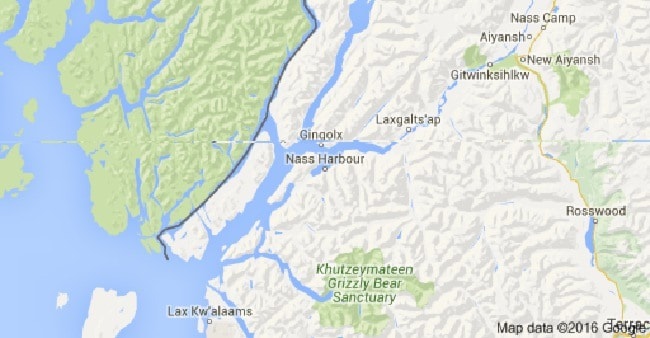The former Arrandale, Mill Bay and Nass Harbour cannery locations in the area of the mouth of the Nass River on the north coast have been named by the B.C. government as among 21 places of historical significance to the Chinese Canadian community.
“These canneries are significant for their multicultural population and workforce, and the contribution of Chinese Canadians to the fish canning industry, which propelled economic growth of the province,” said a recent government release.
All three canneries, the first of which, Nass Harbour, was opened in 1887, employed Chinese workers in addition to Nisga'a residents of the Nass Valley and others.
All three ceased cannery operations by the late 1920s although Arrandale remained operating as a fish camp.
The 21 sites were chosen of 77 nominations and are named under the Heritage Conservation Act as part of a provincial commitment in the Chinese Historical Wrongs Consultation Final Report and Recommendations.
The contractor Heritage B.C. created an interactive online map that features the 77 nominated sites, with extra details on the 21 provincially named (www.heritagebc.ca/chinese-historic-map).
"These 21 historic places help to represent the diversity of backgrounds, occupations and contributions of Chinese Canadians to the development of British Columbia,” said Legacy Initiatives Advisory Council co-chair Henry Yu.
"Their significance goes far beyond the understanding that early Chinese in this province were here only to work on the railroad or mining sector, but that they built their lives throughout the province."
Several other locations named are as follows:
* Cumberland Chinese Cemetery - This cemetery has been identified as significant through its association with coal mining in Cumberland and its multicultural community that included Chinese Canadian, Japanese Canadian, and African-American workers from Pennsylvania. Also symbolic of the place is the fact that Chinese workers were the only ones allowed to go underground, working the most dangerous of jobs. Many Chinese Canadians continue to be remembered in the names of stores in Cumberland.
* Alert Bay, Chinese Business and Residences - This area has significance for illustrating the influence of Chinese Canadians even in the most remote areas of British Columbia. The still-existing
buildings were previously owned by Chinese Canadians and are a reminder of the Chinese Canadian business community that was located in the southeast commercial area of Alert Bay. The place is also significant for the still-existing Chinese Canadian supermarket and the longstanding historical ties between Chinese Canadians and local First Nations communities.
* Nam Sing Ranch, Quesnel - Nam Sing Ranch is considered to have heritage significance through its history of early (1870s) land ownership by Chinese Canadians, during a time when it was rare for
Chinese Canadians to own land in B.C. The ranch also symbolizes the contribution of Chinese Canadians to the growth of the agricultural industry of the province.
* New Westminster Historic Chinese Cemetery - The Chinese Canadian cemetery at New Westminster is considered to have significance as an excellent example of a large, built-over cemetery, now disappeared beneath New Westminster secondary school. The cemetery is significant
for its representation of the significant Chinese Canadian presence in the founding years of the city, of discriminatory practices that segregated the dead, and its enduring symbolism as a site of an erased Chinese Canadian presence.
* Nelson Chinatown/Sing Chong Laundry, Nelson - These places have value for commemorating the significant contribution of Chinese Canadians to the early development of Nelson. Captured in famous literary writings such as Fred Wah's Diamond Grill, the small Chinese Canadian cafés and other businesses of Nelson are an example of other such places in small towns throughout British Columbia.
